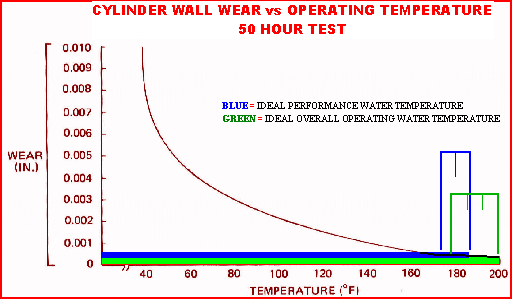after reading thru this thread I find some important points have been TOTALLY ignored, and thats the fact that the engines coolant temp effects or at least tends to effect the engines OIL TEMP. and its a flat out proven FACT that oil temps in an engine that fail to at least slightly EXCEED 215 F durring engine operation for several minutes tend to hold moisture and create ACIDS from the combustion bye-products trapped in the oil mixed with that moisture, those acids can and do cause problems if the engine sits without running for awhile.
then theres the fact that widely varing engine temps. tend to make tunning more difficult also., if your engines temp swings from 160F-235F theres no way the engines going to run as smooth and efficiently as one that tends to stay in a far more limited range of lets assume 190F-210F on the coolant like MY corvettes been designed to do .the fans come on at 210F and I run a 195F t-stat
short answer, Id sellect the 180F or 190F or even a 195F as a far more reasonable choice than the 160F T-stat and
Id sure pay more attention to keeping the average OIL temp in the 215F-245F range than the COOLANT TEMP! under 180F
REMEMBER THAT CHART???
WELL ALOT of that PERFORMANCE ADVANTAGE and engine wear are effected by the operating temp of the OIL and its ability to clean.lubracate and transfer absorbed engine HEAT to the coolant, and the oil won,t do its most effective work untill its up to a minimum of 215F and its film strength tends to break down (depends on type of oil) between 250F-280F over time, so youll want to change oil more frequently if the oil temp tends to run out of the IDEAL range of 215F-245F
you may also want to keep in mind that CAREFULLY CONTROLLED HEAT in the combustion chamber tends to make more POWER, thats why IRON cylinder heads if identical to aluminum heads will tend to make a couple more hp with IDENTICAL compression ratios,(they tend to hold heat in the combustion chamber longer)thats also why you tend to get detonation quicker with iron heads
fuel droplets carried in the airflow thru the ports hitting hot valves and combustion chamber surfaces tend to vaporize, but the time being in micro seconds this favors the hotter chamber with more tumble and swirl, cooler temps tend to slow the burn time reducing power






